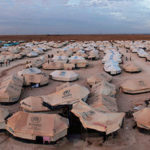Much of the literature agrees that violence against civilians is the primary driver of displacement. However, while a few causalities can be considered established, authors frequently note that findings are either correlations (rather than causalities), or that the causalities need clarification. High-quality literature on population movements has long demonstrated that, even ...» more
Refugees/IDPs
Women and girls in forced and protracted displacement
There is general consensus in this grey and academic literature on the vulnerabilities faced by women and girls in forced and protracted displacement, although less is known about the opportunities they may have and the long-term impacts. Much of the recent evidence available focuses on displaced populations in Europe and countries neighbouring Syria. There is more of a focus ...» more
Refugee return in protracted refugee situations
Voluntary repatriation/return is seen as one of the durable solutions to protracted refugee situations and is the ‘preferred’ solution of the international community. Successful or sustainable return processes require the reintegration of refugees, which can be complicated by their protracted refugee experience and conditions in the country of origin. Evidence from case ...» more
Refugee, IDP and host community radicalisation
Socioeconomic conditions: In some circumstances, poor socioeconomic conditions (e.g. impoverishment, unemployment, lack of access to services and infrastructure, overcrowded living conditions) may make it more likely for refugees/IDPs to become radicalised. However, Lischer (2005) finds instead that there is generally little evidence to support the connection between particular ...» more
Restrictions on humanitarian aid to refugees
The evidence base for this question is extremely weak. Very little of the literature uncovered during this rapid review engages directly or in depth with the question of the impact of such aid restrictions. Even fewer analyse how the humanitarian community has responded to these restrictions. A related debate is ongoing around aid provisions to urban refugees and the ...» more
Democratic Republic of the Congo internally displaced persons and refugees’ relations with host communities
This is a relatively unexplored area with the literature limited mainly to NGO reports. However a few studies have looked at the questions and find that the reasons IDPs/refugees choose to stay with host communities are a combination of factors relating to their physical, emotional and spiritual security, including: They have a negative perception of the conditions in camps and ...» more
Responding to the Syrian refugee crisis in Lebanon – lessons learned
Three groups of lessons emerge from the literature: Political lessons include: understanding Lebanon’s historic refugee experience; understanding how sectarian divisions affect policy and decision-making; the limitations of excluding key stakeholders; and understanding historic relations between refugees and host communities. Strategic lessons include developing a medium-term ...» more
International legal frameworks for humanitarian action
International legal frameworks for humanitarian action provide guidance on delivering assistance in a variety of challenging contexts. They can also be powerful tools in advocating for, and achieving, the protection of civilians. ...» more
Preventing conflict between refugees and host communities
This report includes programme examples from 13 countries. It highlights three main types of programme designed to tackle tensions and conflicts between refugees and host communities:Integrated humanitarian and development programmes – these seek to balance assistance to both refugee and host communities, or integrate services provided to them. Conflict resolution programmes – ...» more
Humanitarian work in Syria and Yemen
Syria and Yemen are both experiencing immense humanitarian and development challenges. Violent conflict, political and civil unrest, rising food and fuel prices, mass unemployment and breakdown in social services have contributed to massive displacement, food insecurity and acute malnutrition, difficult living conditions, lack of basic services and poor housing. Neighbouring ...» more

